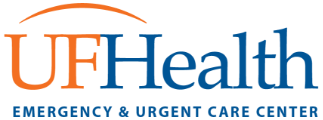
When to Get Medical Treatment for Major and Minor Burns
Anyone can get burned. It is one of the most common household injuries. There were more than 1.3 million reported fires in 2021. The term “burn” comes from the sensation associated with the injury. It is characterized by severe damage to the skin cells.
Most burn cases are mild and people recover from them without problems. However, severe cases require immediate treatment to prevent complications.
The Levels of Burns
There are several levels of burns depending on the severity.
First-degree burns are the mildest. They usually show a red spot on the affected area without blistering. It only affects the top part of the skin, leading to possible peeling as the injury heals. The amount of pain depends on the area of the burn.
With second-degree burns, blistering starts to develop. The skin thickens as a reaction to the injury. The blister can burst and get infected. Skin grafting may be needed to treat the injury.
Third-degree burns are the worst and indicate major damage to the skin. The afflicted area would look white and leathery. Compared to second-degree burns, however, the patient could feel less pain due to nerve damage.
The fourth-degree burn category covers everything from third-degree but extends beyond the skin, affecting the tendons and even the bones.
How to Prevent Burns
The most common reason for burn injuries is accidents involving hot objects. Some jobs put people more at risk. Children are more vulnerable due to their curiosity. Here are a few preventive measures against burn injuries:
- Check bath temperature before using
- Check smoke detectors regularly
- Handle chemicals with personal protective equipment
- Keep matches and lighters away from children
- Place fire extinguishers close to the kitchen
- Remove exposed cords and wires
- Turn cookware handles toward the back when cooking on a stovetop
- Use outlet covers
- Use sunscreen when going outside for extended periods.
Treating Major and Minor Burns
First and second-degree burns can be treated at home and include:
- Soaking the affected area in cool water to help with the pain and swelling
- Take ibuprofen to relieve the pain
- Use antibiotic creams to prevent infection
With third- and fourth-degree burns, you should immediately visit the closest medical facility. The damage caused by these is severe and will not heal properly without medical intervention.
Immediate Treatment for Major and Minor Burns
All three of our Emergency & Urgent Care Centers in Jacksonville are available 24/7 to provide treatment for major and minor burns. Our professional health care staff is ready to provide you relief from the burn and start the recovery process.

